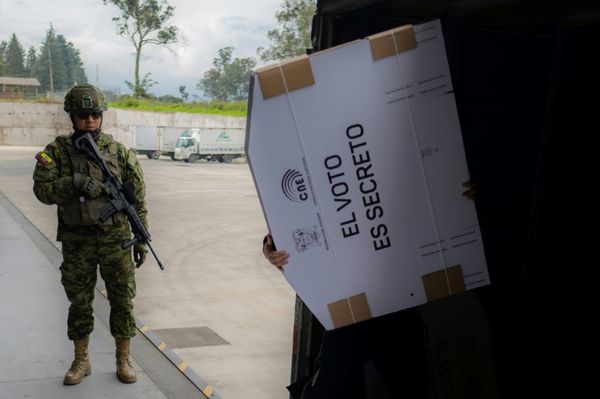
NICHINAN, Miyazaki -- Mangoes cultivated in Miyazaki Prefecture are harvested when they are fully ripe, after naturally falling from their trees. This cultivation method gives the fruit a rich sweetness and aroma unique to mangoes from the region. In late April, I visited a farm in Nichinan in the prefecture.
I entered a greenhouse in which the temperature was as hot as a midsummer day. Palm-sized mangoes were growing on the about 140-centimeter-tall plants.
Grower Hidetoshi Kawano, 53, showed me a vivid orange-red fruit that had fallen from a branch of a tree into a small net. "This mango is fully ripe," he said. A sweet, scrumptious aroma filled the air.
Each fruit is covered with a net, which is attached to an overhead wire. The nets catch fruit that falls from the trees when they are ripe, Kawano said.
In Miyazaki Prefecture, which is now the second-largest mango producing area after Okinawa Prefecture, many farmers used to grow mikan mandarin oranges and vegetables. However, such products faced fierce market competition, so local farmers began mango cultivation in the prefecture in the 1980s in the hope that the fruit would become a local specialty.
At first, growers harvested mangoes at their own discretion by cutting the stem of each fruit. However, some said mango tastes best when it becomes fully ripe and falls from trees naturally, so workers at an agricultural cooperative developed a method to catch such mangoes in nets.
Hiroki Yoshino, an official at the Miyazaki prefectural government's section in charge of promoting Miyazaki brands, said, "In order to increase the quality and reputation of the prefecture's mangoes, the prefectural government, agricultural cooperatives and producers decided to harvest all mangoes using this method."
Mangoes in Miyazaki Prefecture are shipped from March to July, earlier than in Okinawa Prefecture. The mangoes are a premium variety, each costing more than 2,000 yen.
In 1998, the JA Miyazaki economic federation and other entities created standards for fully ripe mangoes of the highest quality based on weight and sugar content, among other factors. Mangoes that meet such standards are sold under the prefecture's own brand "Taiyo no Tamago" (Egg of the sun) and are typically marketed as gift items.
"Take big bites," Kawano said, offering me a fruit that had just fallen from a plant. Because it is such an expensive fruit, I tried to politely decline the offer. However, Kawano said, "The fruit has a scratch, so it will be processed to make juice or other products."
The scratch was minuscule, but if it meant I would be allowed to try one of their delicious mangoes, I was more than happy to indulge. The flesh of the fruit was soft, and its sweetness mouth enveloping. It amazed me that a fruit so delicious didn't make the grade to be sold in a store.
There are four mango ranks, including "Taiyo no Tamago" and others for fruit destined for processed products. According to Kawano, the standards are strict in order to protect the Miyazaki brand.
"We spent a lot of time and effort growing them. I hope many people will enjoy eating our ripe mangoes," Kawano said.
Memo
To cut mangoes decoratively, hold one down on the cutting board and make two parallel, lengthwise slices on both sides of the flat seed in the center. Using the two outer portions, make long cuts lengthwise and crosswise into the flesh, being careful not to cut through the peel. Gently press the skin of the mango to invert the fruit.
Mangoes belong to the cashew family, and their juice may cause skin irritation to those with allergies.
Mangoes from Miyazaki Prefecture can be bought from online retailer JA Town (www.ja-town.com/shop/f/f0) and at Miyazaki Airport, among other locations.
To find out more about Japan's attractions, visit http://the-japan-news.com/news/d&d
Read more from The Japan News at https://japannews.yomiuri.co.jp/







